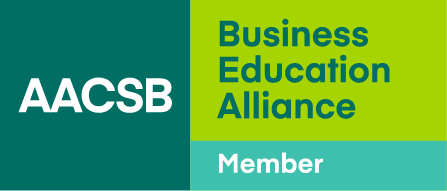The Market-Responsive BBA
Completely reconceptualizing an undergraduate degree program is no easy feat, but it recently was a necessary one at the Zicklin School of Business at Baruch College, a senior college in New York City that is part of the City University of New York (CUNY) public university system. “For some time, we have been hearing from business leaders that the skill sets business graduates need now are different from what they needed as recently as two or three years ago,” says H. Fenwick Huss, Willem Kooyker Dean of the Zicklin School.
What skills did employers say they wanted most? Technology, data analytics, and communication skills. After in-depth conversations with the business community and input from the dean’s advisory council, the Zicklin School assembled a BBA redesign working group comprising faculty members from all seven departments at the business school and administrators. The committee revisited every element of the undergraduate business curriculum before drafting recommendations for curricular changes in collaboration with other faculty, administrators, and stakeholders.
Though the BBA program has made changes in the past, “this is the first time in 25 years that we’ve taken a serious look at the BBA program on a conceptual, big-picture level,” says Kannan Mohan, executive director of undergraduate programs and a professor of information systems, who headed up the working group. The proposed changes were unanimously approved by Zicklin faculty, and the school will begin phasing those changes into the BBA core curriculum at the start of the Fall 2021 semester.
The group took a “clean-slate” approach to the redesign process—as if they were starting from scratch, says Seth Lipner, professor of law and chair of the Zicklin School’s Undergraduate Curriculum Committee, as well as a member of the working group. “Everyone involved approached the curriculum redesign with a sense of urgency,” says Lipner. “There was nothing that wasn’t fair game.”
This approach enabled the committee to look at the curriculum in new ways, says Huss. “Ultimately, we wanted to make sure that courses across the BBA program were linked, as opposed to being siloed,” he says. “When they take courses in their majors, we want our students all to build on the same fundamental skill set emphasizing technology- and experience-driven decision making rather than abstract concepts.”
A more Relevant Core
After its deliberation, the committee recommended a new curriculum that focuses on enhancing students’ basic skills in three areas: quantitative reasoning, technology, and communication. The linchpin of the revamped undergraduate business curriculum is Foundations of Predictive Analytics and Decision Modeling, a new core course. It was developed with input from faculty from accounting, finance, information systems, management, statistics, and quantitative modeling.
Foundations replaces a calculus course that had been a BBA prerequisite for decades. The curriculum committee concluded that the calculus course did not cover important skills that students need to understand before they take advanced-level courses in their majors or enter today’s business environment—such as quantitative literacy, statistical reasoning, decision modeling, spreadsheet engineering, and the ability to interpret and communicate quantitative information.
“Today’s companies expect their employees to use technology and data to inform their decisions, virtually across every business segment,” says Lipner. “The new class is designed to give students the tools to answer questions in a logical, analytics-based way.”
Speaking the Language of Business
For the past two decades, the undergraduate curriculum also has incorporated communication-intensive courses. However, while those courses emphasized liberal-arts-based English-language skills, they did not spend as much time teaching the skills needed to communicate effectively in a business context.
To bridge this gap, the committee used as a benchmark the research of Kristen Lucas, a professor of management and associate dean for faculty affairs at the University of Louisville in Kentucky. In her research, Lucas identifies seven attributes of great communication, which the committee integrated into a new business communication curriculum. The objective is to teach students to produce professional, clear, concise, evidence-driven, persuasive communication that is audience-aware and purpose-oriented.
“The aspirational goal is to repeat and reinforce the seven foundational business communication competencies throughout all disciplines and at all levels,” says Lipner. “We envision proficiency in the seven communication competencies as a defining feature of our graduates.”
To better integrate these competencies, the Zicklin School collaborated with English and communications studies faculty from Baruch College’s Weissman School of Arts & Sciences, as well as staff from the Bernard L. Schwartz Communication Institute, the Tools for Clear Speech program, and other communications support service providers. The multidisciplinary team of faculty brainstormed ideas for teaching students written, spoken, and visual/graphic business communication skills in ways that allowed them to practice and build upon what they learn.
We envision proficiency in the seven communication competencies as a defining feature of our graduates.
That effort led to the creation of two new communications courses that “provide our students with more experience-based opportunities to develop business-specific communication skills earlier in their degree programs to support them in their majors, at the capstone level, and in their careers that follow,” says Meechal Hoffman, director of the Schwartz Communication Institute.
The first is a full-semester course focused on business-centric communication, such as writing effective emails, making data-supported recommendations, and communicating both within and outside teams and organizations. The second is a seven-and-a-half-week course on professional speech, which replaces a previous requirement that students take a generic public speaking class.
Designing the communication courses also inspired the curriculum committee to consider other life skills that students might need to develop. The result was the creation of an additional course called Principles of Financial Planning and Individual Investing. The half-semester course teaches students to manage their personal finances more effectively.
“College students and young businesspeople are often unsophisticated and inexperienced about the importance of financial planning, saving, and how to invest their own monies,” says Lipner. This course, he adds, not only provides students with tools to support their personal financial health and well-being, but also instills in them the competence and confidence to succeed in their chosen fields.
'Practicing What We Preach'
All in all, the collaboration across organizational and departmental units was one of the most gratifying parts of the curricular redesign process, says Huss. “The entire exercise,” he notes, “is a microcosm of the business world, where problems rarely occur in silos and where sound, sustainable solutions require cross-boundary approaches that respect all stakeholders.”
Huss points out that the channels for communication and collaboration that were created during the redesign will allow the school to make evidence-based adjustments to the BBA program more quickly going forward. These adjustments will be based on reviews of how well students in pilot courses achieve learning goals, as well as on feedback from students, faculty, alumni, and recruiters on how the redesigned curriculum affects students’ career readiness.
The second phase of the program rollout will involve working with other schools in the CUNY community on ways to prepare students even before they arrive at Zicklin. “For maximum impact, we need to bring the larger CUNY community into the equation, so that students who reach us from that pipeline are equally well positioned to succeed in the BBA program,” says Lipner.
Perhaps the biggest advantage of the curriculum overhaul is that it has better positioned faculty to embrace the nimble, agile business practices that business schools so often teach, says Huss. “There’s an old joke among academics that it’s easier to change the course of history than to change a course in history,” he says. “We’re determined to practice what we preach by keeping our minds open, listening to the needs of the marketplace, and implementing mission-driven changes that maximize our value to our students and the business community.”





